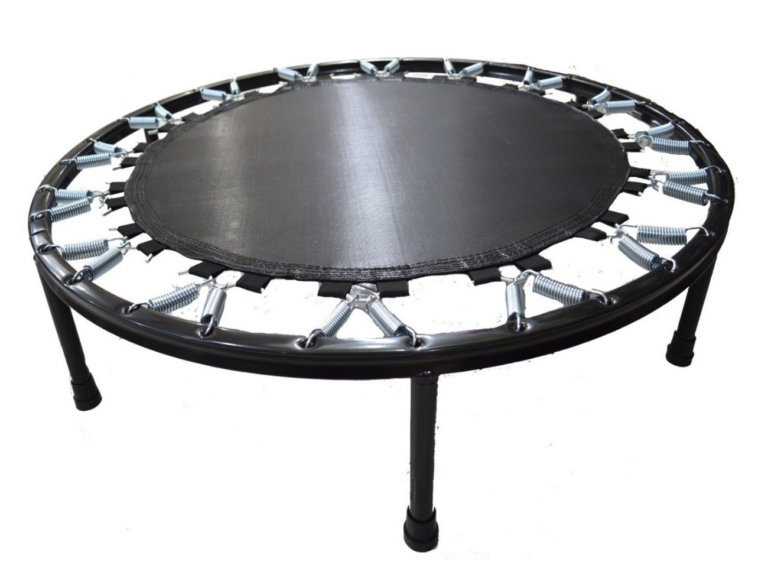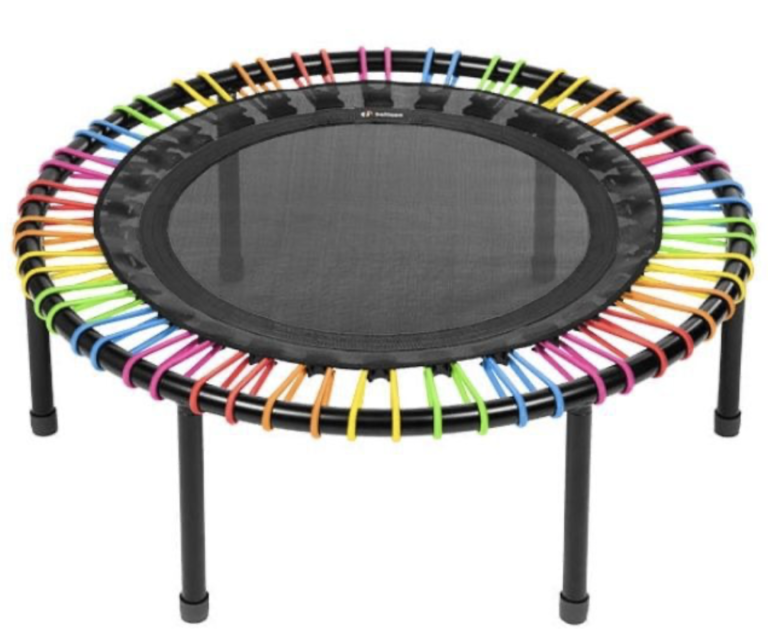We started with sprung rebounders but glad we changed to bungees
Sprung & Bungee, aren't they just the same?!
Purchasing a mini trampoline can be a bit of a mine field, especially when there is so much choice on offer. So when you start searching and you realise that actually there are two different types of rebounders available, the obvious question is, which one do I choose? Sprung or bungee cords?
When Scott & I first started our rebounding career we began with sprung trampolines and knowing no different, we thought that these were the bees knees. Little did we know that when we transitioned to bungees cords a few years later, we vowed never to go back to springs again!
In this blog we are going to highlight the pros and cons between the two options so that when it comes to you making your own decision, we have hopefully made it a little easier for you.
If you’re thinking of purchasing a new rebounder, take a look at our blog 6 TOP TIPS ON BUYING A REBOUNDER
Are you looking for great rebounding workouts? Scott & myself are here to help with over 15 years of experience in the rebounding fitness industry and more than 500 videos on our
Subscription Channel, SanFran Fitness. Try our 7 DAYS FREE TRIAL

Sprung Rebounders - pros
- More brands available plus sprung rebounders are generally less expensive than bungees.
- A firmer surface that might be better suited to people suffering with balance issues, collapsed arches or motion sickness.
- Smaller in diameter and lower to the ground.
- Foldable options available, making it easier to transport around.
- A better choice than high impact sports such as running.
Sprung Rebounders - cons
- The firmer surface has a higher impact through your body than a bungee, meaning its harder on your joints.
- Springs are more prone to rusting and breaking.
- Springs are harder to replace due to the tighter surface.
- Without maintenance they quickly become squeaky and noisy which is annoying for you, your family and your neighbours!
- If you choose to bounce barefoot, there is a higher risk of injury if your foot slips through the brackets.
- Cheaper brands attach the springs directly to the frame which is a poor design, resulting in stress on the frame and causes the springs to break.

Bungee Rebounders - Pros
- Softer bounce, meaning more comfort and support for your whole body, offering a better low impact workout.
- Quieter than a sprung rebounder which make it ideal for those living in apartments and adjoining houses.
- Higher and deeper bounce due to the elasticated cords.
- With some brands, you can choose the strength of your bungee cords, meaning you can customise the trampoline to suit your needs.
- Bungees tend to last longer with no rusting.
- Replacing a cord is easier and less likely that you will trap your fingers in the process.
- The cords work your muscles harder due to the deeper bounce, therefore increasing your calorie burn and muscle strength.
- The rebounders come in different sizes to suit your height and space available in your home.
Bungee Rebounders - cons
- Cheaper bungee brands will not have as many cords around the circumference of the trampoline, meaning if a cord snaps then there will be a large gap. Plus the elasticity of the cords are usually weaker, resulting in a bounce that is too deep.
- The top brands can be very expensive but in the long run, it’s worth it.
It all comes down to preference and your budget💰. What suits one person won’t necessarily be the same for someone else. So it is important to weigh up your options when making this investment, because at the end of the day you want a product that is going to last and give you many happy and comfortable years of bouncing.
⬇️ To find amazing rebounding videos for beginners, intermediate and experienced bouncers, take a look at the links below ⬇️
If we can help further with purchasing a rebounder or you have any questions, please contact us on [email protected]


